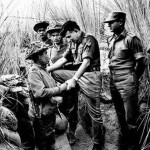Budget and Expenditure
It is suspected that the government finds it convenient to park budget provisions in MOD in order that this could be diverted when required to higher priority areas. Otherwise there cannot be a reason for surrendering substantial proportion of Defence budgets year after year. Over a period of five years, the Air Force surrendered one full year’s capital budget. While the Services are focused on spending the budget, similar enthusiasm is lacking in controlling expenditure. We need good database on cost of equipment and cost of activities without which it will not be possible to effectively outsource that which could bring in higher efficiency and performance.
“¦the DRDO has been criticised for delays and cost over-runs. Criticism alone would not do since it can only demoralise. We need to make a fresh start.
Every activity should be costed and cost-accounting and should be pursued as followed in the West. The cost of manpower and related infrastructure is increasing exponentially. Improved quality of life demands greater expenditure and attention to the needs of personnel. Over 60% of the services go towards manpower costs. Western nations spend not more than 40% of the budget on manpower. There is no way to reduce manpower costs without reducing manpower! Services must treat reducing manpower in the same light as capability enhancement. We need an attitudinal change. Currently it appears impossible to emulate Israeli Defence Forces in this regard. Their example could serve as an inspiration!
Wasteful Effort
Defence Estate Department has a very large inventory of land having no use for the military. Military possesses huge land and related infrastructure unwanted or most sparingly used – that cost a great deal in terms of manpower and expenditure to maintain. Airfields uneconomical are owned and maintained by the Air Force. The military possesses large useless inventory that has been criticised by CAG. Weapon systems beyond useful life are maintained at extraordinary effort and cost since they are not replaced in time. We operate at least four different aircraft and use five different engines that had become obsolete and do not fly anywhere else in the world! Upgradation of the Air Force fleet comes at the near end of the life of a weapon system when there is no replacement in sight – to give it a fresh life. This is a bad strategy.
| Editor’s Pick |
The West talks about mid-life upgrades and never an upgrade at the end of life! Our MIG-21 upgrade, the BISON project has still not been completed. It is now a race to complete the upgrade before the technical life gets over! There is plenty of scope to improve interoperability between the three services. Many systems used by the three services have many commonalities. Currently, the logistics systems followed by the services are not linked. A spare which one service needs may be in surplus with another but there is no way to know it. Facilities are duplicated or even triplicated without being aware. Besides improving efficiency, costs and manning could be significantly reduced through integration among the Services.
Future Military Operations
It would be impossible to hide large forces, ships and large fleet of aircraft from detection in future. While force deployments would be known, only the intention could be concealed. Strategic forces would be continually tracked and communication monitored. Collateral damage to civilian lives and property would not be tolerated by international community.
Among major powers, other than members of erstwhile Soviet Union and China, Indian Forces probably have the largest non-available inventory.
Economic assets in the country are growing geometrically and are highly vulnerable. These have to be defended strongly from attacks by air and sea. The air defence network should gear up to cover the essential and vulnerable areas and points.
Quality would be the element and not quantity. The man behind the gun and the machines would be irreplaceable and would need to be given best protection possible. A modern soldier would be better qualified, educated and trained. Manpower cost would escalate rapidly.
Concepts and capabilities must be validated through training followed by realistic exercises. Cost and time would be the important drivers in assessing efficiency of all activities
A serious study is needed to arrive at the optimum mix of forces. Such an exercise must ensure that core competency is not diluted or duplicated, integrating operations, logistics, administrative and training support between the services and enhancing interoperability.
Transformation
The government must formulate National Doctrine on Defence. The Doctrine in turn would guide the long term plans – equipment, infrastructure, organisation, force structure and methods of employing the forces. Short term plan must be guided by government directives that would specify tasks that the military is likely to undertake over the next 10 years. It is not mere technology upgrade and acquisitions but a single focus by the three services in meeting the objectives dictated by the government jointly in an optimal and cost-effective manner. Services must build joint capability – the ability to achieve desired operational effects under the specified conditions in a combined optimal way with the right choice of systems and personnel. Interoperability of every system between the Services must be ensured. Since time would be always at premium, speed and effectiveness are most essential.
Concepts and capabilities must be validated through training followed by realistic exercises. Cost and time would be the important drivers in assessing efficiency of all activities – of the military in being and the military at war. The Department of Defence of US formed the Office of Force Transformation to deal with evolving concepts, processes, organisation and technology to meet the emerging challenges. It evolves and encourages new ideas through experimentation and exercises. It studies and assesses lessons learned on battlefields from every part of the world. India could possibly create such a department within the Joint HQ. We should hope for healthy debate in the Parliament on the capabilities of our military and budget allocations which would enhance accountability and performance.




